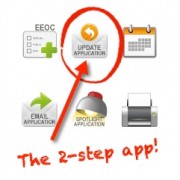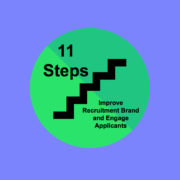Employee Onboarding…or Onboring?
No one likes to be bored. But what makes people bored in the first place? If you ask my 5-year old son, he’d probably tell you “doing something I don’t want to do”. And that’s a pretty good start. To that, I would add the feeling of “my time is valuable, and this (whatever it is) is less valuable than my time.”
Providing Value
With the above definition of boring, we could say that boring onboarding is a low-value experience–that is, low-value from the employee’s perspective. This should not be mixed up with questions of compensation. Truly great employees are not motivated by salary alone; there needs to be value beyond dollars. So how can you determine if your organization provides a high-value experience though the employee onboarding process?
To help answer this question, it may be helpful to consider what a new employee may likely need or value. This will undoubtedly vary from employee to employee, but an onboarding process that is marked by the following qualities will provide value to almost everyone.
Clarity
No one likes to be confused. Confusion leads to doubt, and doubt can decrease confidence and increase anxiety for a new employee. Employers who provide clarity around initial duties and company policies will empower new employees to become productive more quickly.
The most obvious place to start is with policies. While not all employers have–or need–elaborate policy manuals or employee handbooks, it’s important that new employees can easily access documentation on items such as payroll, PTO requests, appropriate workplace conduct, and available benefits. Ideally, an employer will initially present and discuss these items face-to-face.
Clarity is also important when assigning initial duties to a new employee. Often, a manager may assume that new employees know more than they really do. When a manager unintentionally omits important details related to an assignment, the new employee may feel as if they are in a “sink or swim” environment–which, when unintended, can easily torpedo the employee onboarding experience.
Timeliness
Waiting on something is one the most boring things to do. But timeliness is not just the elimination of waiting, it’s providing the right resources and services at the right time.
For example, on the first day of employment, an employer could provide a new employee with a stack of new hire forms and a schedule of work assignments for the first three week, and this would eliminate a lot of waiting, but it could also overwhelm the employee. A more effective approach would be to provide these items as employees need them so that they have time to absorb and understand the information at a comfortable pace.
Yes, an employer should have resources prepared ahead of time so that new employees are not waiting. But employers shouldn’t dump a truckload of information and assignments on a new employee all at once.
Challenging
A high-value employee onboarding process should deliver an enjoyable experience, but this should not be mistaken for an easy experience. Great employees are constantly looking for ways to improve. They are motivated to achieve and add value to your organization. Giving new employees easy work doesn’t put their talents to use and can be just as demoralizing as giving them too much work.
By developing a plan for a new employee’s first few weeks, an employer has the opportunity to provide a good mix of fun, easy, and challenging assignments. This mix will ensure that the employee gains experience and confidence as they assimilate to a new job and organization.
Fun
Most of the time when we think of a fun onboarding process, we think about an employee’s first day and some type of “meet and greet” event. Maybe this also includes company swag. That’s all worthwhile and exciting, but if the fun screeches to a halt after the first few days, then the glow can quickly wear off for a new employee.
Fun doesn’t have to be special. It doesn’t have to cost money. And it doesn’t have to waste time. But a fun onboarding process does require a fun company culture; without it, an employer is simply creating unrealistic expectations that lead to poor employee retention. Which leads me to our final quality…
Delivering (on) Expectations
Although important, first impressions are easier to make than they are to maintain. And the quickest way for an employer to ruin a good first impression…is to follow it up with a boring onboarding experience.
After the initial recruiting and hiring efforts, employee onboarding seeks to meet an employee’s initial expectations. Everything from an employer’s job description, career site, hiring process, and interview will have made an impression and created expectations. Employee onboarding is where this is all put to the test.
However, it shouldn’t be a surprise that some employees will perceive a discrepancy between what they expected and what they experience. This is natural, and it is why onboarding must also continue the work of creating expectations. This dual objective–of both meeting and creating expectations–is one of the reasons why the employee onboarding process is so crucial to the larger idea of company culture.
Onboring
Despite the excitement surrounding a new employee’s first day on the job, boredom can quickly set in during the first weeks of employment. It is during this time that your new employees will determine what working at your company is “really like.” When employers develop an employee onboarding process that delivers high-value to new employees, those employees are more likely to stay longterm and quickly impact the organization.
ExactHire develops employee onboarding software that provides employers with a paperless employee onboarding process, while also ensuring that new employees and existing staff can efficiently collaborate on onboarding activities.









